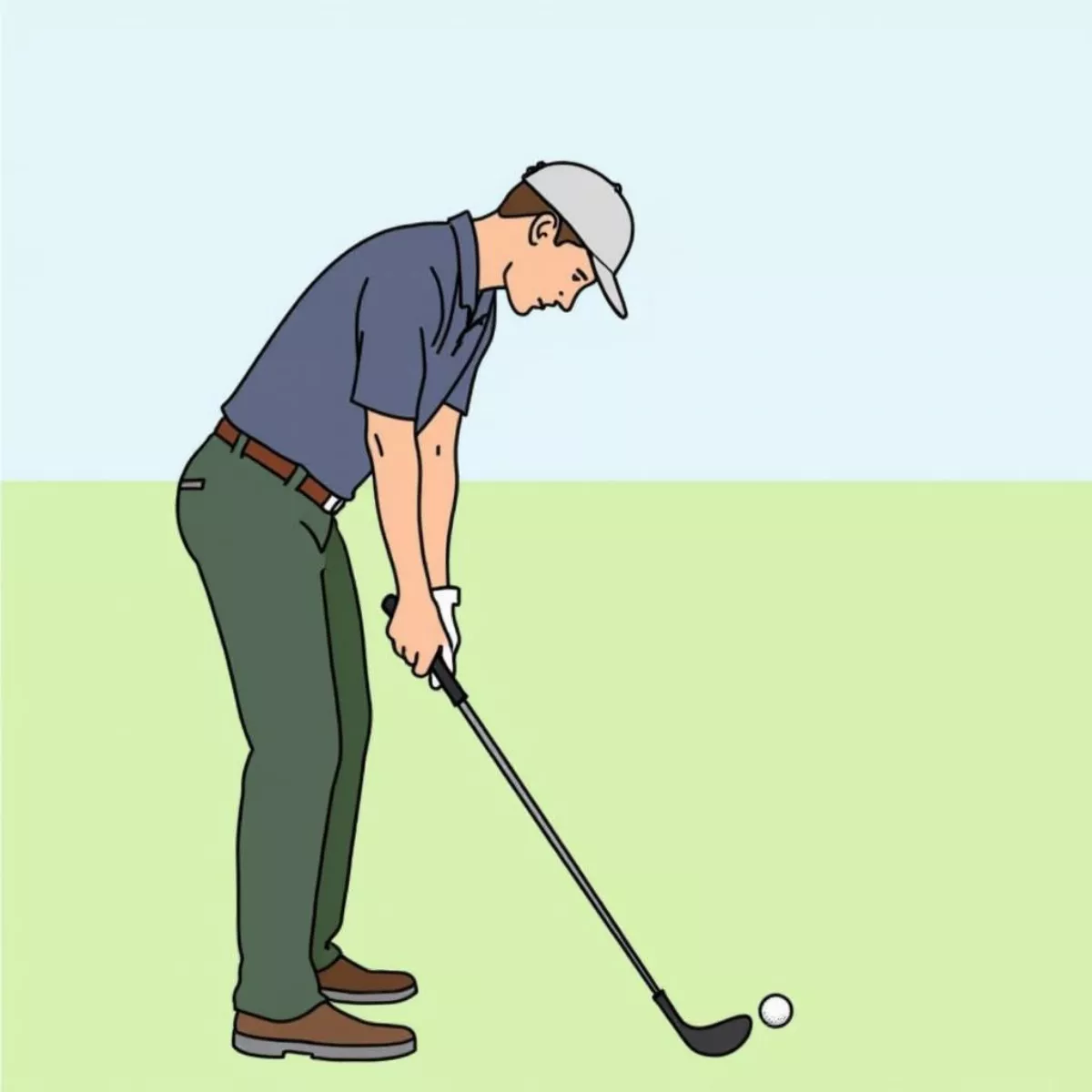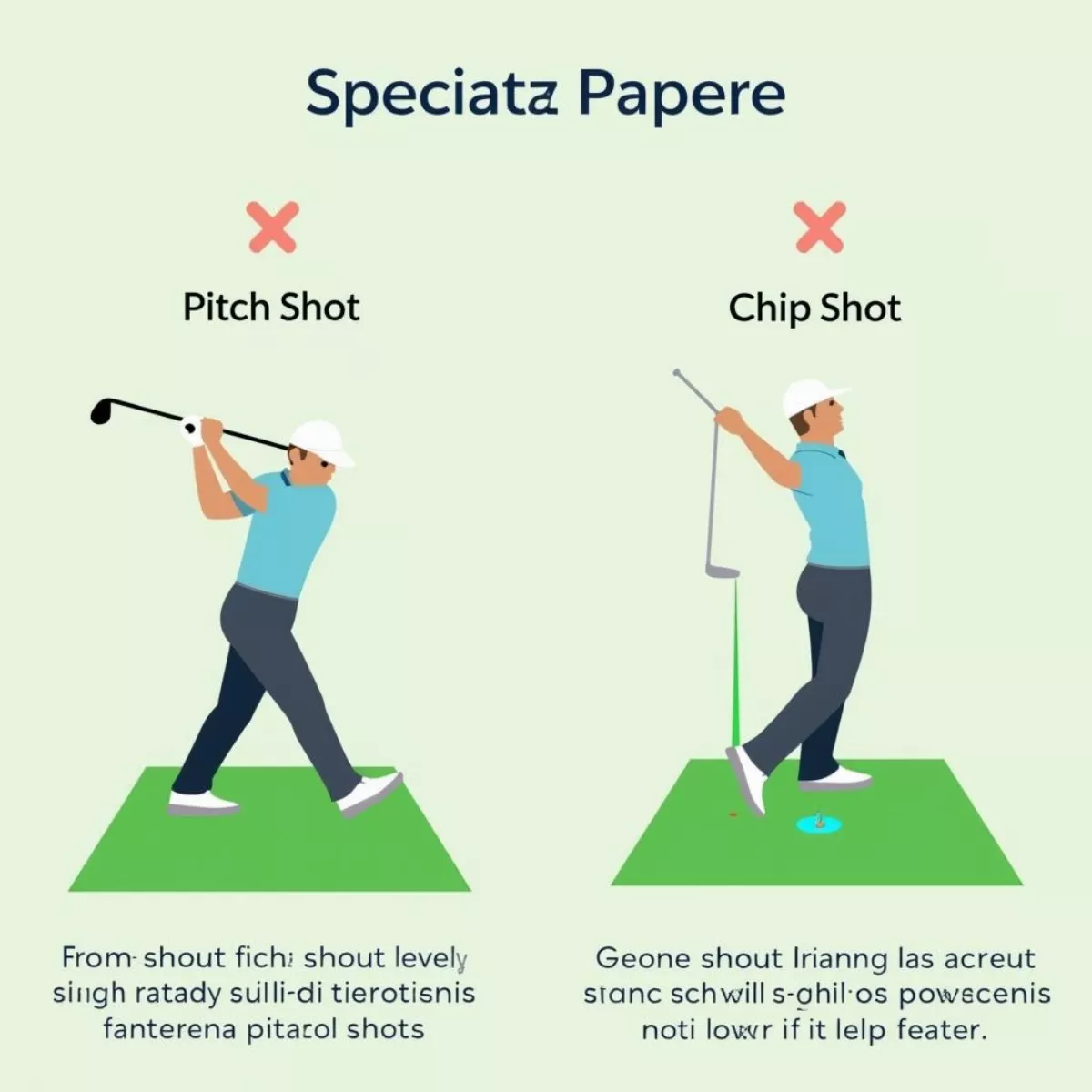If you’ve ever stood near the green, watching your ball veer off in a direction you didn’t expect, you’re not alone. Many golfers struggle with how to effectively play a shot around the green. Two common techniques can help improve your short game: the pitch and the chip. But what exactly is the difference between them? And when should you use each method?
This guide will walk you through the ins and outs of golf pitches and chips, comparing their purposes, techniques, and when to use each shot. So grab your clubs, and let’s dig in!
What is a Golf Pitch?
A golf pitch is a short shot that’s usually played from a distance of 30-100 yards from the green. It involves a more significant upward trajectory with a relatively softer hit, allowing the ball to land gently on the green. The goal? Get the ball to land softly so that it doesn’t roll too far after landing. Here’s how to execute a successful pitch shot:
Key Characteristics of Pitch Shots:
- Swing Type: An upward stroke with a higher follow-through.
- Trajectory: Higher than a chip; often, the ball lands softer due to the loft of the club used.
- Clubs Used: Typically, pitchers use a wedge (like a pitching wedge, gap wedge, or sand wedge).
- Distance: Ideal for distances between 30 to 100 yards.
How to Perform a Pitch Shot:
- Stance: Stand shoulder-width apart with the ball positioned slightly back in your stance.
- Grip: Hold the club with a relaxed grip.
- Backswing: Take the club back deeper while maintaining your wrist hinge.
- Downswing: Focus on a smooth, downward strike with your weight transferring forward.
- Follow-Through: Ensure a high follow-through to promote that high trajectory.
Common Mistakes:
- Narrow stance: Make sure to have a solid base for balance.
- Wrong club selection: Always choose a wedge for better loft.
- Overhitting: Keep it simple; a smooth swing generally results in a better pitch.
 Golfer Performing a Pitch Shot
Golfer Performing a Pitch Shot
What is a Golf Chip?
In contrast, a golf chip is a shorter shot typically played when you are within 30 yards of the green. The emphasis here is on keeping the ball low and using a more controlled swing, allowing for much less airtime and more roll after landing. The goal here is to get the ball to roll towards the hole.
Key Characteristics of Chip Shots:
- Swing Type: A shorter, more controlled stroke with less wrist action.
- Trajectory: Lower than a pitch; chips usually roll quite a bit after landing.
- Clubs Used: Often made with a 9-iron, 8-iron, or a sand wedge.
- Distance: Ideal for distances of within 30 yards.
How to Perform a Chip Shot:
- Stance: Position your feet close together and align your weight slightly on your front foot.
- Grip: Use a light grip to maintain control.
- Backswing: Keep the backswing short and controlled; think “clock” (9 o’clock back to 3 o’clock).
- Downswing: Focus on making contact with the ball first; the groundiness of the shot helps.
- Follow-Through: The follow-through will be much shorter than that of a pitch shot.
Common Mistakes:
- Too much wrist action: This can lead to inconsistent contact.
- Playing the ball too far back: Conditions can vary—better to place it center.
- Lifting the club too high: Keeps your focus low and controlled.
 Golfer Executing a Chip Shot
Golfer Executing a Chip Shot
When to Use Each Shot
Knowing when to navigate a pitch versus a chip can drastically improve your game. Here’s a quick guide:
| Distance | Shot Type | Description |
|---|---|---|
| 30 yards and closer | Chip | Low shot with minimal loft |
| 30 to 100 yards | Pitch | Higher arc for softer landing |
Situational Awareness
- Use a pitch when you need the ball to stop quickly after it lands, such as when you’re approaching a tight pin position.
- Use a chip when you have ample green to work with, and you want to let the ball roll out toward the hole.
Tips for Mastering Your Short Game
- Practice: Spend time on the practice green. Repetition will help you develop touch and feel.
- Visualization: Before each shot, picture the desired trajectory and landing spot.
- Stay Calm: Nerves can lead to erratic strokes. Focus on technique, not result.
- Choose the Right Club: Think about roll and trajectory; club choice is critical.
- Pace Yourself: A slower, more deliberate stroke is often more effective.
Recommended Drills
- Pitching Drill: Place three balls at different distances and practice hitting them to the same target.
- Chipping Drill: Set up targets at various distances and try to land your chips as close to these targets as possible.
 Pitch vs. Chip Shot Trajectory
Pitch vs. Chip Shot Trajectory
Key Takeaways
- Pitch shots are for longer, softer strikes, generally used 30-100 yards from the green.
- Chip shots are shorter, low strikes, used within 30 yards from the hole for a controlled roll.
- Proper club selection and technique are crucial for success in both pitching and chipping.
- Practicing with goals and targets will significantly improve your short game feel and technique.
Frequently Asked Questions
1. Can I use the same club for both pitches and chips?
Yes, but it’s often better to use a wedge for pitches and an iron for chips to suit the shot you’ve decided to make.
2. How do I know if I should pitch or chip?
If you have more than 30 yards and want a soft landing, use a pitch. For less than 30 yards with a lot of green to work with, opt for a chip.
3. What is the biggest mistake golfers make when chipping?
They tend to use too much wrist action, which leads to inconsistent contact.
4. Should my stance be wider for a pitch or a chip?
Your stance should generally be wider for a pitch to maintain balance, while a narrower stance is suitable for chips.
5. How can I improve my pitching and chipping skills?
Regular practice and drills focusing on distance control and trajectory can significantly improve your short game.
6. Is the follow-through different for chipping and pitching?
Yes! The follow-through is generally shorter for a chip, while you should follow through higher for a pitch.
7. What mental approach should I take when chipping?
Focus on your target, remain calm, and visualize your shot before executing.
8. When should I consider using a lob wedge?
Use a lob wedge during pitch shots where you need high loft and a soft landing over obstacles.
9. What are the ideal conditions for pitching or chipping?
Both techniques can be used in diverse conditions, but soft ground may benefit your pitch, while dry turf could favor chips due to roll.
10. Will practicing these shots help my overall game?
Absolutely! Mastering pitch and chip shots can lower your score, helping to handle the critical strokes around the green more effectively.
By understanding and mastering the differences between pitches and chips, you can transform your approach to the greens, improving both your confidence and your score. Now it’s time to put this knowledge into practice—hit the course, and happy golfing!

